There’s a long tradition of artists making self-portraits. Often the reason (or intent) of these self-portraits was simply exploratory. They needed to practice or try something out and they used the model nearest to hand—themselves.
That was the case with my quilt “Self-Portrait with Shadow” (detail above). Early in my career (1980’s) I concentrated on portraits. At first I often used inks, paints, or colored pencil to do the fine details and shading. But as I became more interested in using the colors and patterns in fabrics to achieve similar effects (1990’s), I wanted to see what I could do without using those “cheats.” Let me say right now that I’ve got nothing against painting on fabric! It was just a (now long-standing) challenge I gave myself.
I was in my what-can-I-learn-from-this-portrait mode when I decided to do an exercise to make myself work with sheers. I had been intrigued by what I’d already done using shear fabrics in the portrait of my father-in-law, “Dain” (below left), on the background house and on his face, then for my friend “Susan P” (below right), where I used organza to suggest the lenses of her glasses.
I especially wanted to explore using light colored sheers for highlights and darks for shadows, so I needed a subject with strong highlights and shadows. The following photos (since faded) were taken by Tom on a sunny afternoon in the backyard of our Portsmouth, NH duplex. Strong morning light created the intense highlights and shadows.
Another reason for using myself as the subject was that since I was experimenting with the medium, I wouldn’t disappoint anyone if it didn’t turn out well.
My long-time feline companion of that time was named Shadow. It seemed obvious I needed to include him in the piece if I was going to work with shadows. Including my cat gave me the extra challenge of collaging my first animal—being furry and black made the challenge even harder. Black animals are notoriously hard to depict due to lack of good photos—the fur and values often just blend together. Fortunately, he was one of those black animals that when in strong sunlight, his fur had brown highlights, giving me a few extra fabrics to pull from.
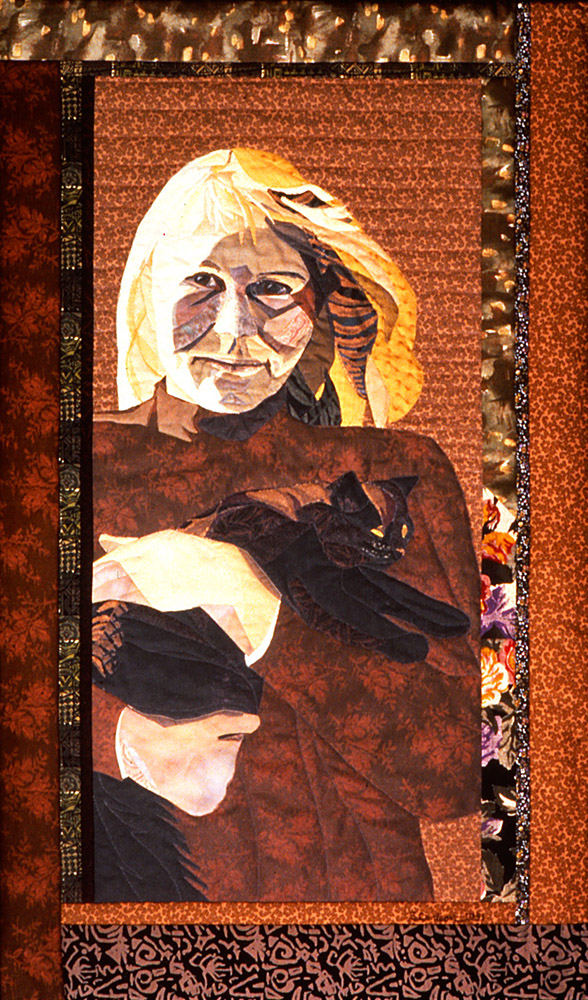
I used some favorite fabrics in this piece, especially in borders (my how my tastes have changed!). A lot of my early quilts had borders. At the time I was managing a picture frame shop, so that was probably an influence. I saw the borders as inner and outer mats. You might notice that I tended not to do any quilting in the borders. They were applied after the inner piece was quilted, giving them a different look and texture from the image, again like a frame.
My mother isn’t fond of this particular portrait. She thinks it’s too harsh, which was kind of the point—good thing I was the guinea pig. But it did what I wanted it to do. I got experience using sheers.
Then, I made a quilt specifically for her.
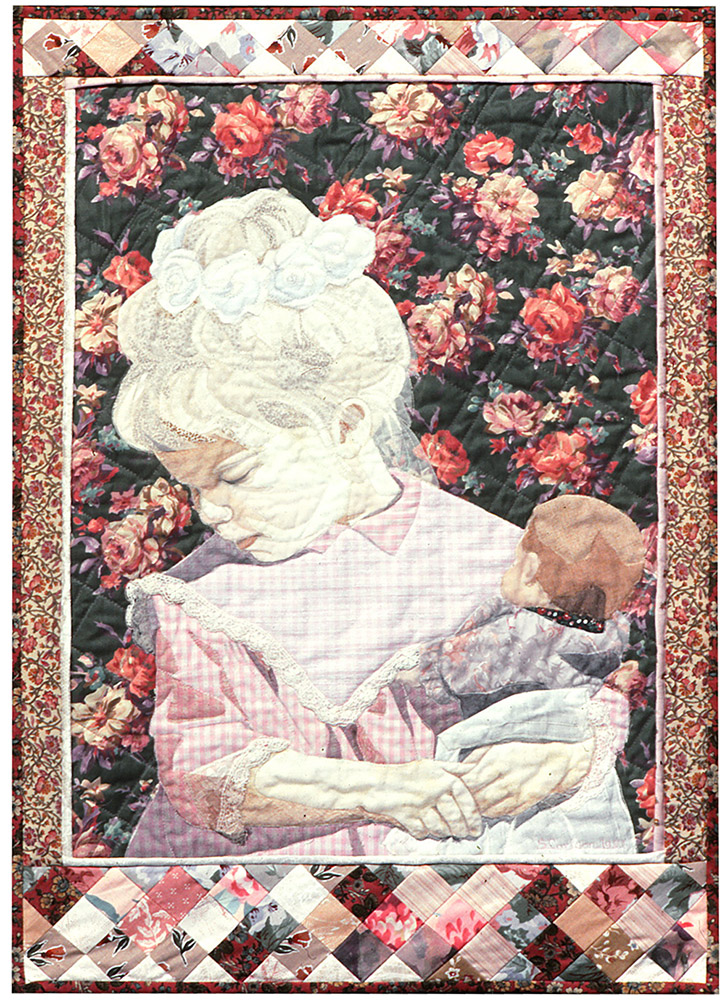
“Snooks” is a pet name given to me by my dad. The quilt was based on a favorite photo of my parents’ that my dad took when I was three years old. (The same age, coincidentally, as my son Sam in “Samuelsaurus Rex.”)
In the picture, I’m wearing a gingham dress my mom had made. When I made the quilt, she had remnants from that dress in her stash (of course), which I used in the portrait—with vintage lace for the trim. I’m holding my favorite doll. My uncle Dieter once caught me bathing that doll in the toilet—seemed like a fine doll-sized/toddler-height bathtub to me! Eventually the hair fell out and my mom fashioned a helmet of hair from some fake fur glued onto the skull. The little jacket the doll is wearing was one my Oma had made for the doll. I still have both—but the doll is back to being bald.
The top and bottom borders are traditionally pieced as strips, meant as a memory to the hand-pieced quilts from my grandmother I slept under as a child. The photo was taken in front of our house where there were evergreens and roses behind me, so I chose a simple background behind the portrait that was reminiscent of those features.
So the picture is full of memories both for me and for my parents. In this quilt I did relapse to a few years prior and used a bit of colored pencil to define the features. I tell my students that children are among the most difficult subjects to use for fabric collage. Most children’s faces are a softly curved expanse of flawless skin. There are no contours, wrinkles, whiskers, nothing to help give shape and form. So I resorted to colored pencil for touches of shadowing around the eyes, nose, and mouth.
This was gift for my parents way back when. Recently, we rearranged my mom’s sewing room so that she has a collection of family art grouped together, displaying images of her two daughters and her two grandkids—all of us as youngsters.
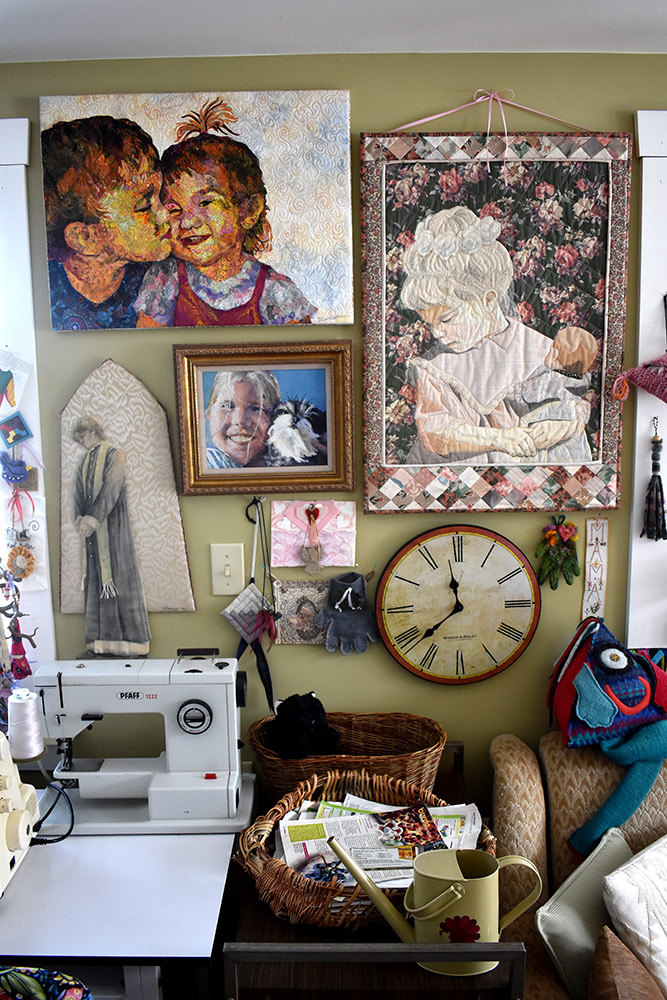
If I was asked by a student if either of the original photos for these quilts was acceptable for a fabric collage project, I would probably tell them that neither is ideal. Both have their challenges: the one has too much contrast, the other not enough. Yet, as you can see, they both worked out in the end. It depends, as I said in my previous blog post, on your intent. My intent for the “Self-Portrait with Shadow” was to explore, to practice, to learn, so the outcome was really not that important. The intent of “Snooks” was very different—to create a likeness as a gift—making the stakes higher.
Will I ever do another self-portrait? It’s not something I’ve considered. Though I could use it as an excuse to buy more fabric. Nah, I don’t need an excuse.
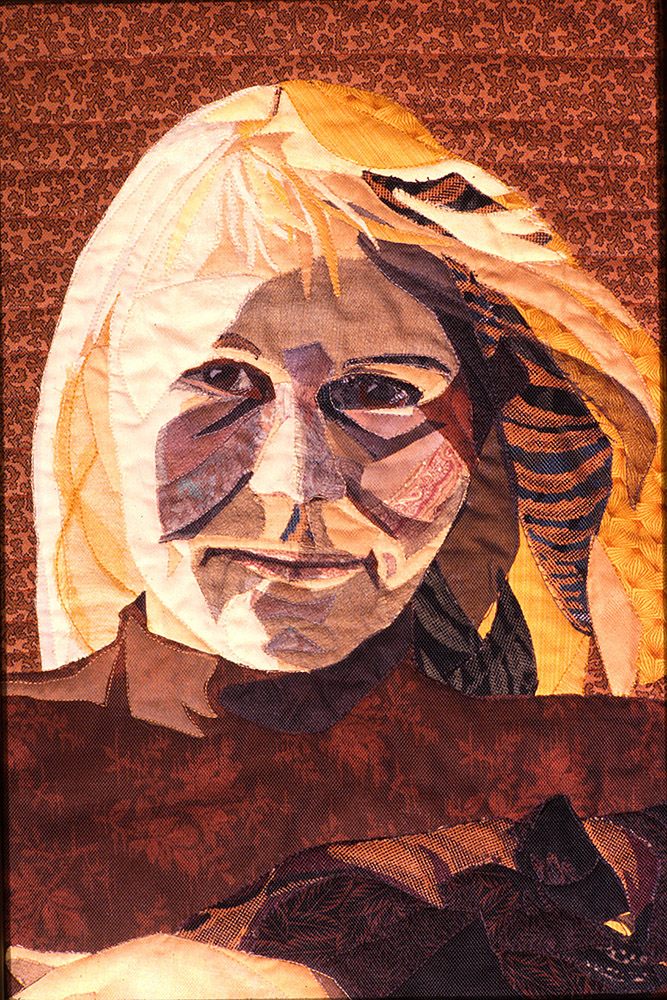




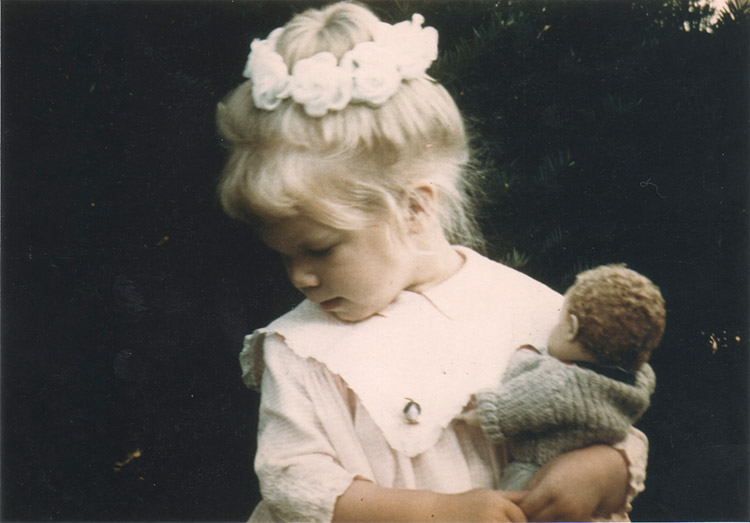
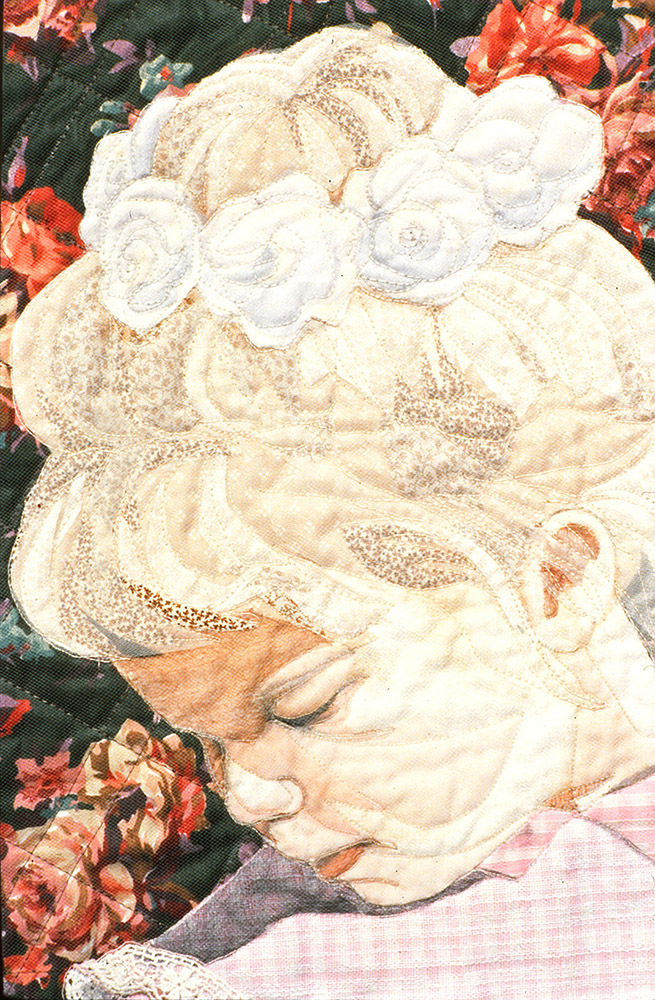
These. Are. Amazing. And they inspire me. Thank you for sharing your work and for writing about your process!
Very interesting article, but I have one nit: Shears are scissors or cutters; sheers are see-through fabrics.
Of course they are, Jerri. Thanks for pointing it out. Corrected.
I really looking at your self Portraits specially the little girl holding the cat. It’s carry such a warm and loving feeling.
Enjoyed
It was fun reading about your early pieces and seeing some links to traditional quiltmaking (borders, etc.) and how you have grown and morphed. I love the stories of the quilts! And it is good to see that Kissin’ Cousins is finished and on your mom’s wall.
What a wonderful story. The quilts are amazing. I’m looking forward to joining your workshop here in Australia with Caroline Sharkey.
You have my doll! She was given to me when I was three and now she watches over my studio.